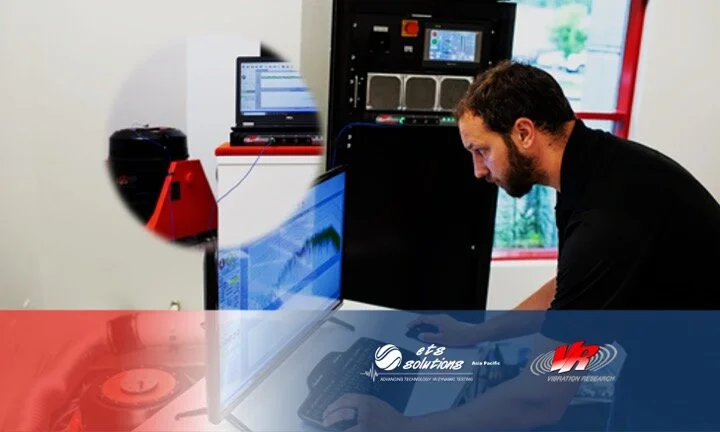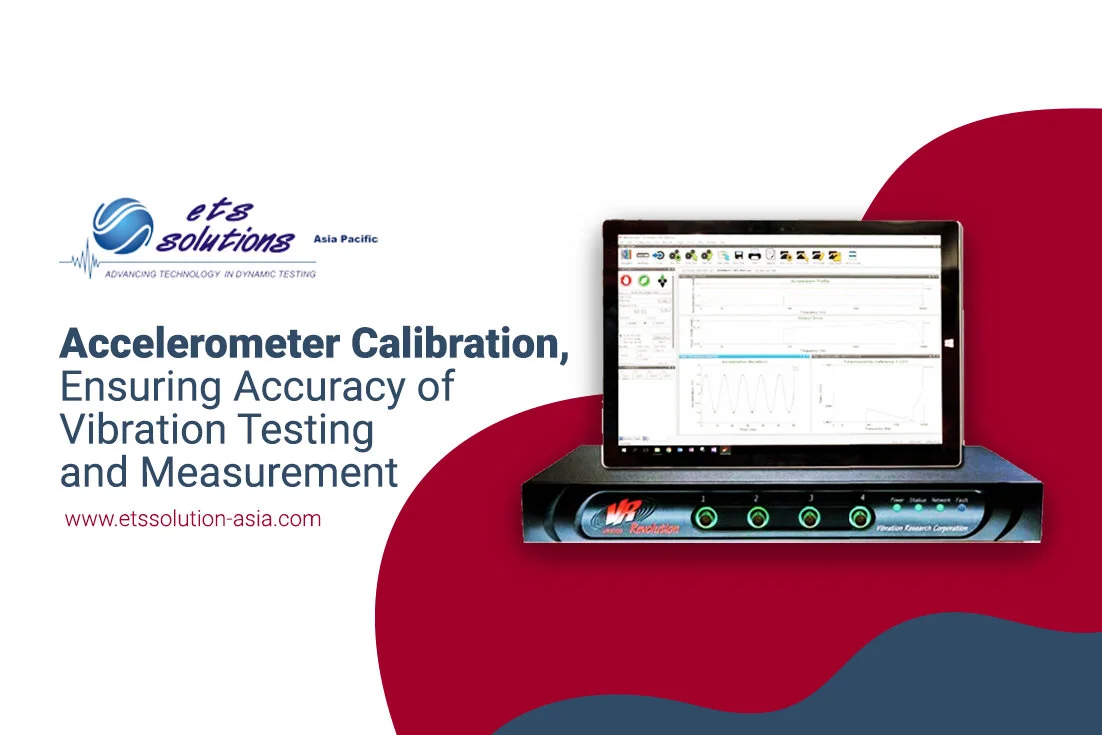Vibration Testing is one such environmental test critical to the design process. All closed-loop vibration tests, consists of four main components: a vibration controller, an amplifier, a shaker, and a feedback sensor, together, these four components make up a vibration testing system. ETS Solutions Asia instruments vibration controllers control electrodynamic and hydraulic shakers from tabletop to warehouse size systems.
Sine Vibration Testing
Sine Vibration Testing may be considered as the most basic vibration testing method used. This type of vibration testing requires less complex parameters compare to other type of vibration testing. Knowing the nature of sinusoidal signal, makes this type of vibration testing easier to understand and to get familiar with. Though, easier to understand does not make it less important compare to other type of vibration testing. Sine vibration testing may still be at the top rank when we are thinking of dynamic characteristic measurement.
Simcenter road load data acquisition solution
Vibration Testing for Aerospace Payload_NASA-STD-7002B
National Aeronautics and Space Administration (NASA) is one of the most well-known aerospace agencies in the world. Therefore, NASA standards are also used as reference for testing laboratory to run testing related to component or sub-system of a spacecraft. NASA-STD-7002B is part of NASA standard that provides a standard set of flight hardware test requirements.
Vibration Controller, The Brain of Vibration Testing System
While accelerometer is playing the role of feedback sensor at vibration testing system, then vibration controller can be considered as the "brain" of it. Vibration controller is the device that sending the "instruction" in the form of drive voltage during vibration testing, and also interpreting the feedback signal coming from the accelerometer.
Predictive Maintenance with Condition Monitoring, Increasing Maintenance Efficiency
Running Environmental Stress Test, Simulating Thermal Fatigue
Like development of other test equipment, the development of climatic test chamber is also following the requirement of the test standard, both common international test standard and test standard specially developed by specific industry (electronics, automotive, defence, packaging, etc). Find out the requirement and Remember to share this with any friends or colleagues that will find it valuable.
Shortening the Design Process of Vibration Test Fixture by FEM Simulation
When we have a relatively small size and simple shape of UUT, with a simple mounting pattern, simple product orientation and low frequency test range, it will not be so tough to design a good vibration test fixture. But when we start to see one or more of below characteristics, then likely we will find designing vibration test fixture to be very challenging.
Accelerometer Calibration, Ensuring Accuracy of Vibration Testing and Measurement
Why products are vibration tested?
Products are vibration tested to determine limits and tolerances. Every product is vulnerable to vibration loads and potential breakage or failure. That includes tiny objects like microprocessors and circuit boards right up to giant structures like bridges and skyscrapers.
Vibration testing allows designers, engineers and manufacturers to know what stress limits their product can withstand.
Testing through vibrations ensures the product is qualified for its intended purpose and meets safety and regulatory standards, as well as complies with any International Standards Organization (ISO) requirements. Part of due diligence in vibration testing determines fatigue testing, failure limits and structural integrity screening.
Many industries routinely use vibration testing as part of their quality control program. Finding out what vibrations a product withstands before release makes good business sense. Known limitations allow the end user to employ their product safely and put it into trouble-free service.
Testing for vibration resistance prevents product recall, supports warranty conditions and provides excellent product purchase value.
With more than five decades of expertise in the business, we’ve created our own line of efficient instruments and tools to alleviate the need of several industries that include aerospace, defence, automotive, consumer electronics, locomotive, construction and more.
Any inquiries or any doubts regarding vibration testing, we are here to help you. Contact us today and our team will be happy to assist you.











